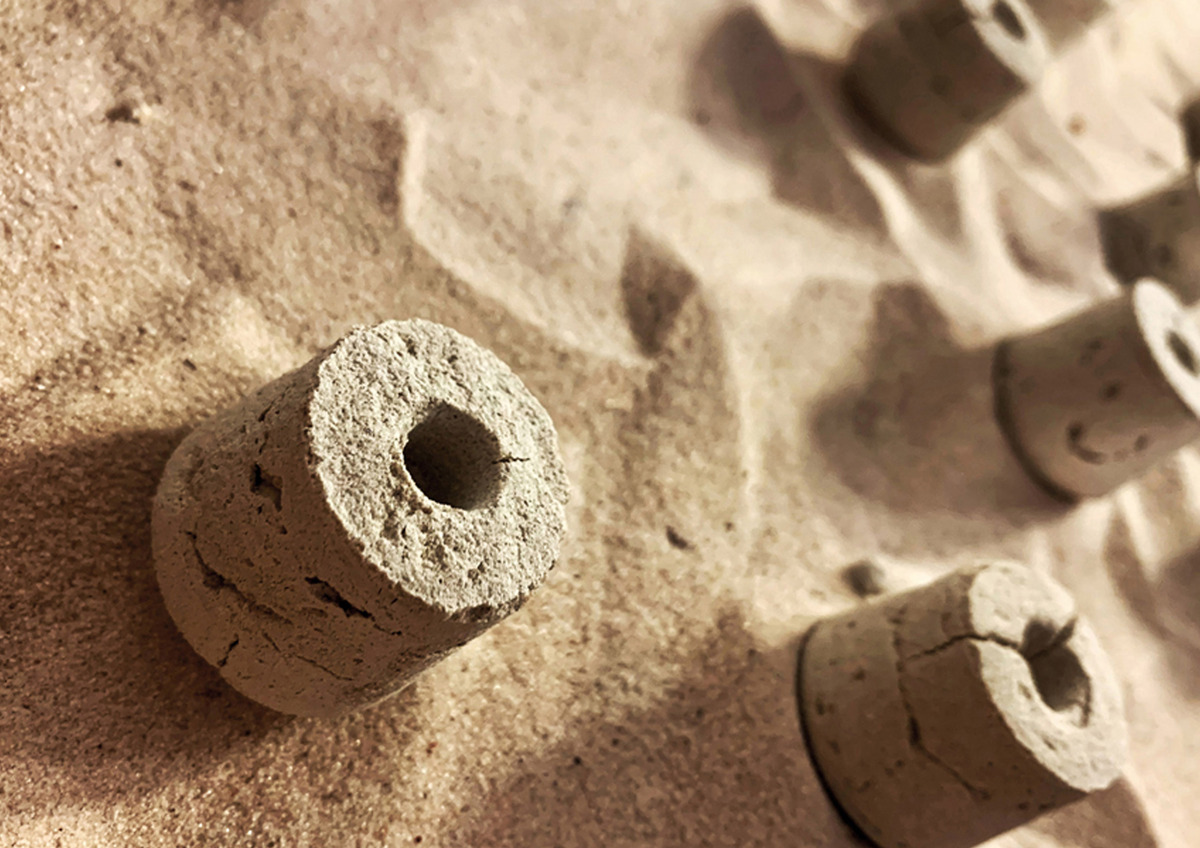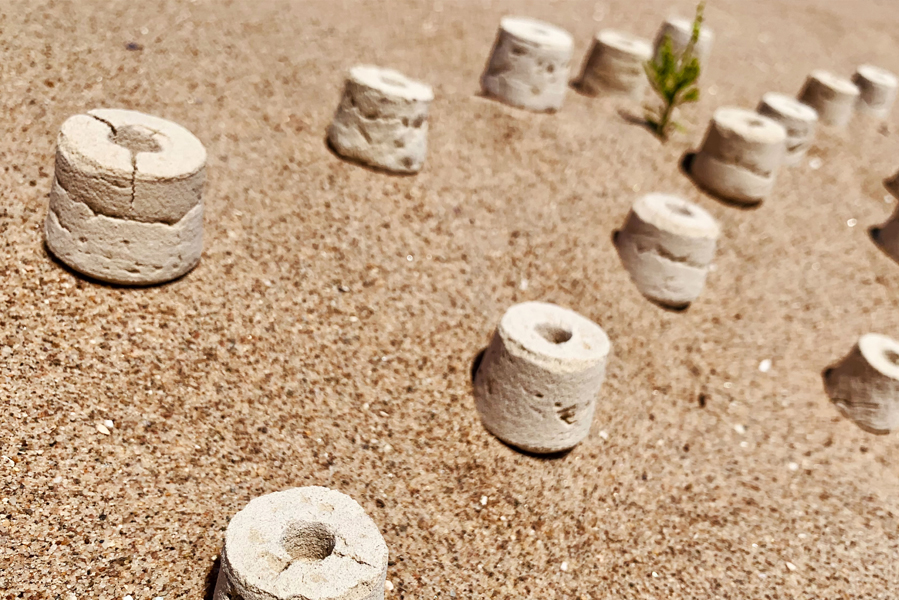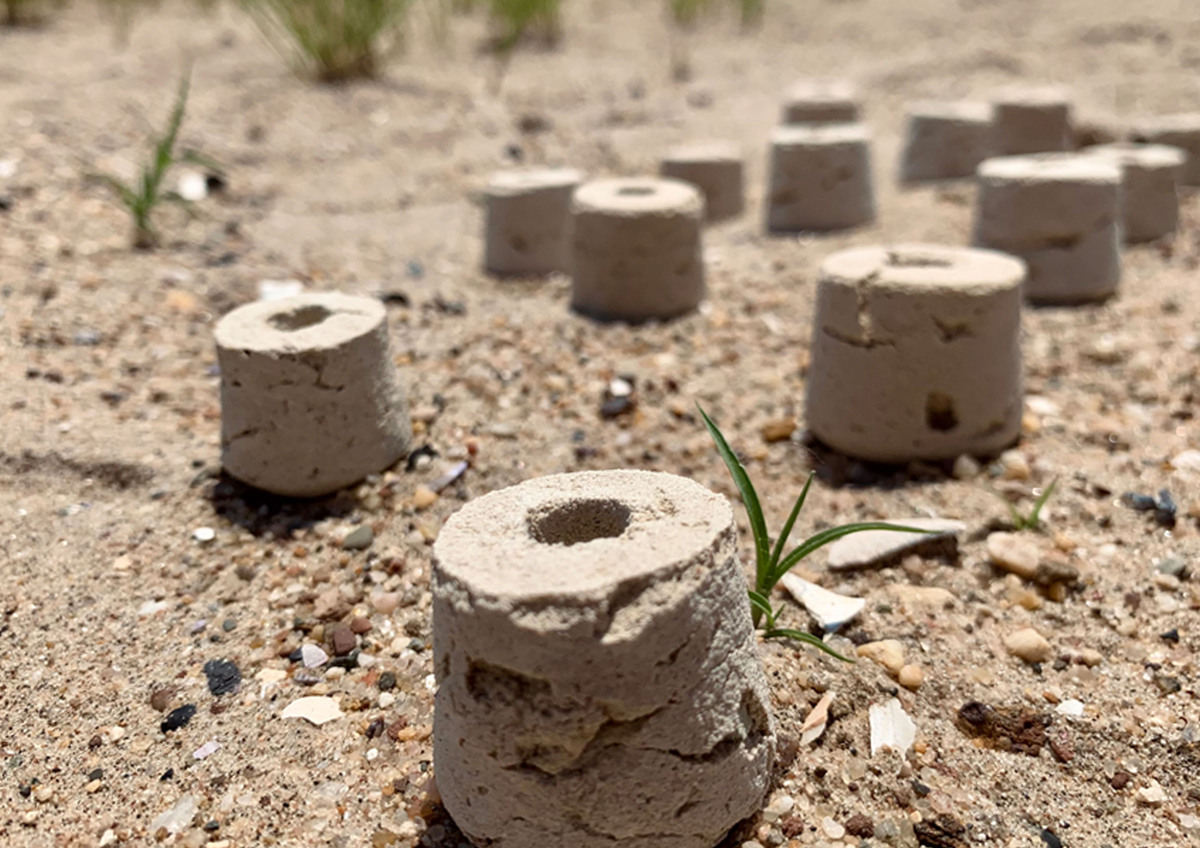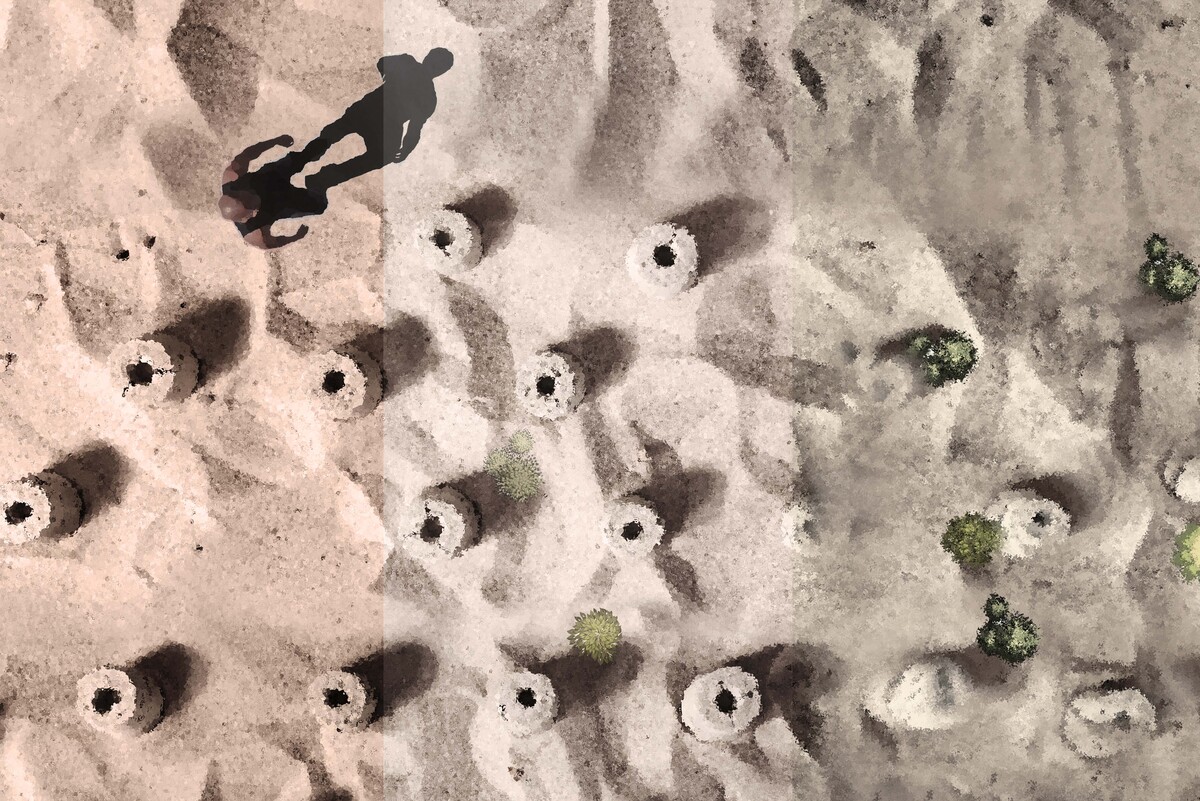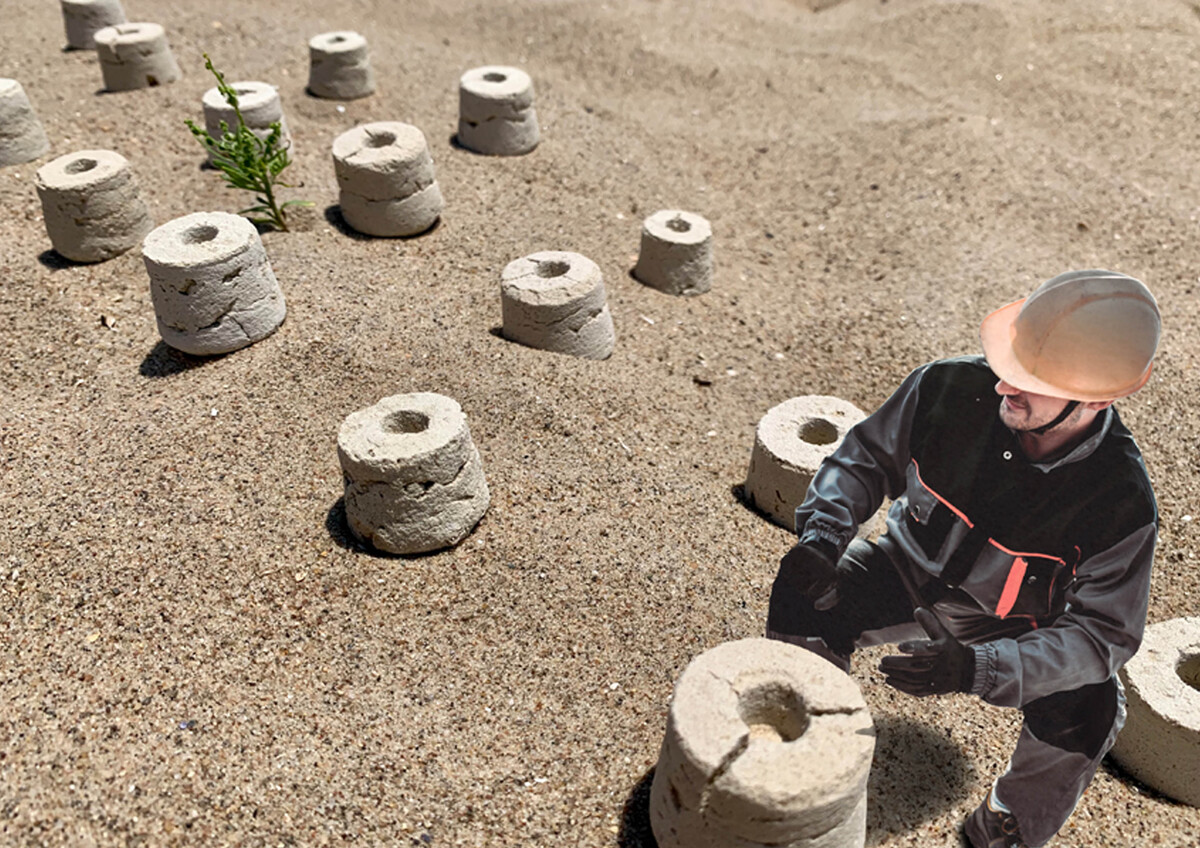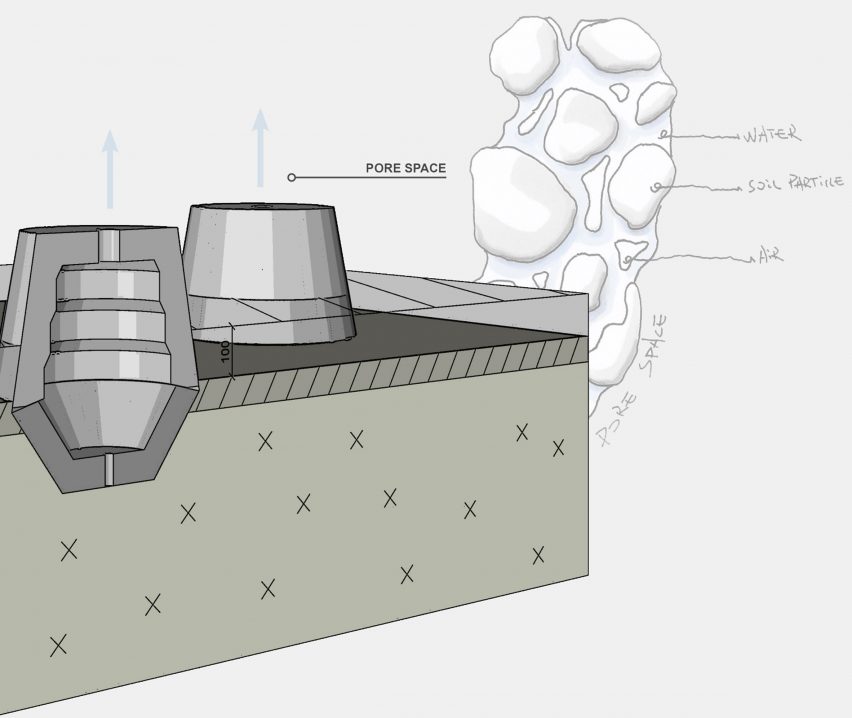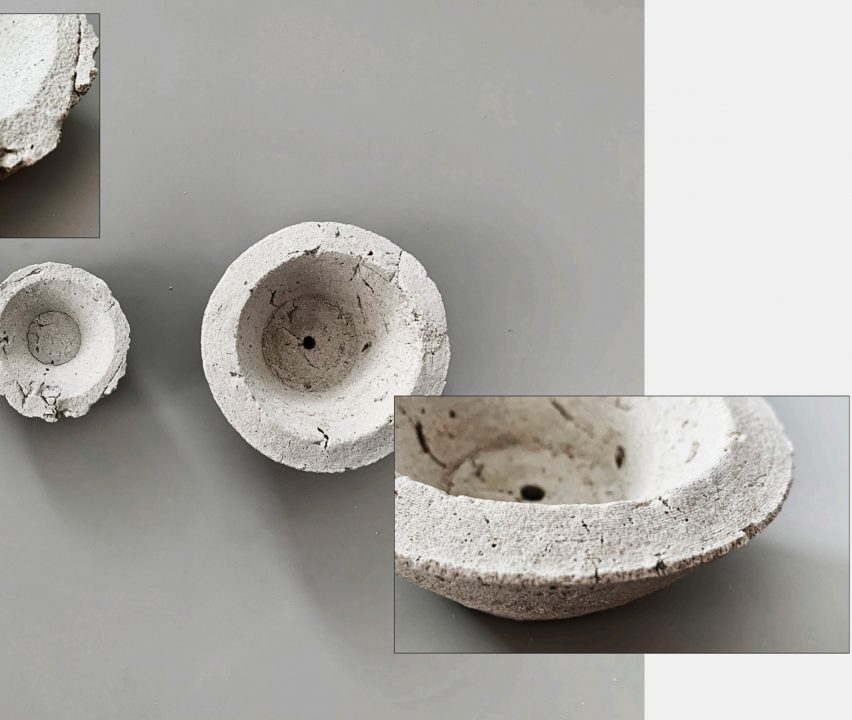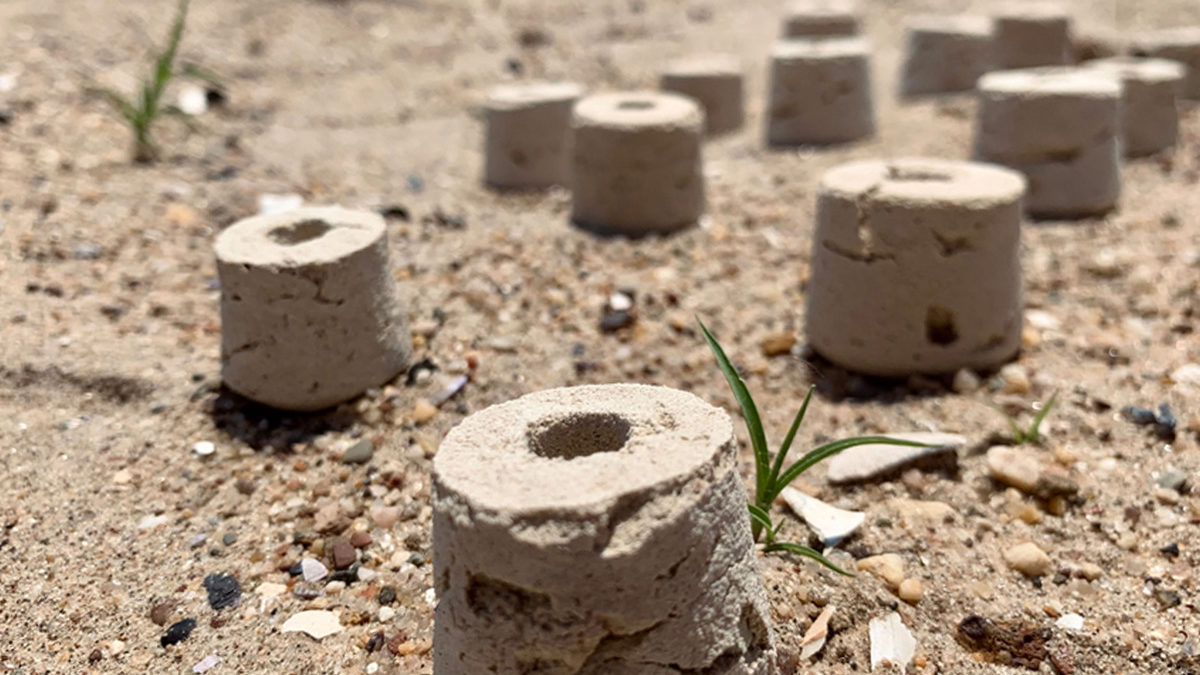
AQUASTOR, a project to stop desertification
Graduated from Parsons School of Design, Zihao Fang has designed Aquastor, a biodegradable vessel created with local resources and developed to stop desertification. The project is inspired by research from Princeton University showing how termite mounds can prevent the degradation of fertile land by storing moisture and nutrients in their underground tunnels. To create them, termites artfully mix inorganic particles with organic bits, a blending that helps the soil retain nutrients and resist erosion.
Inspired by this research, Zihao created Aquastor, a vessel formed by a mixture of sand, stone and clay with leaf litter and discarded exoskeletons. Its inside structure is hollow and presents a shape similar to a jujube kernel, with a thin upper part and a thick lower part, buried below the ground level. In this way, the temperature difference between the surface and the internal structure is used to change the air pressure difference to create a thermal circulation and accumulate moisture. Over time, the vessel will break down providing nutrients to the soil. According to the designer, Aquastor is a low-cost and low-tech solution to stop desertification and support arid land reforestation. These territories make up 40% of the Earth’s total land area and are increasingly threatened by desertification.
c
Practices such as intensive agriculture and livestock farming and deforestation, combined with global warming and extreme weather phenomena, deplete the nutrient-rich soil, making it increasingly vulnerable to weathering. This arid soil lacks the essential components to guarantee life. Furthermore, the inability to retain water can also lead to extreme events such as floods and landslides. Aquastor was created to stop all this.
Basically, thanks to its cavities and micropores, the material is able to store water and humidity before they evaporate. In this way, the container provides nourishment and restores vigor to the soil. According to the designer, the actual degradation time will change in different regions, but it is expected that the desertification problem in the area will be improved before the Aquastor protective belt is completely degraded. One vessel measures 45x45x48cm, weighs almost 2kg and the nutrient-rich structure reaches a thickness of 6cm. Each element is placed 1m away from the other, in order to create a belt. Zihao tested the first version near Takla Makan Desert in northwest China, using locally sourced materials.
Taking inspiration from termite mounds, Aquastor is able to provide nourishment, store moisture and facilitate the development of more fertile soils. This is not just an interesting project and an example of biomimicry, but proves to be a fundamental support for large-scale reforestation projects, in which to date there are no sustainable solutions for the supply of water and nutrients.
To know more, visit Zihao Fang’s website!
c
c
Do you want to see your project featured on WeVux? Feel free to send us an email at [email protected] to know more, or visit our About page

